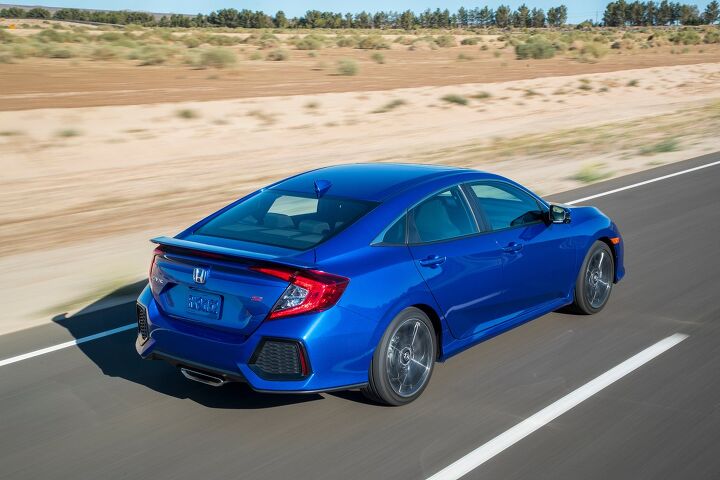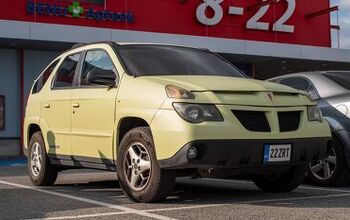Toyota Corolla, Honda Civic Just Might Pull Off Wins This Year

As selling compact passenger cars to Americans is no longer a responsibility borne by domestic automakers, Japan is left shouldering much of the burden in a segment it’s always excelled in. Western car sales are on the decline and, with the Detroit Three pulling out, Japan saw both a challenge and an opportunity.
The biggest players, Toyota and Honda, chose to expend every round in their magazines in the hopes of scoring hits. The Civic and Corolla diversified, upping their game and pulling further ahead of rivals like the Nissan Sentra and Mazda 3.
If capturing a bigger share of the pie while stabilizing their own softening sales was the goal, Honda and Toyota seem to have succeeded. With two months left in 2019, it’s increasingly looking like both models could finish 2019 with a sales increase.
For Civic, 2017 was the nameplate’s high-water mark. The Corolla, previously split between two models riding atop different platforms, is now whole again. The Corolla iM, formerly the Scion iM, is now the Corolla Hatch, sharing its TNGA architecture with the new-for-2020 Corolla sedan. For the first time, Toyota is offering a hybrid variant for those who aren’t ready to be seen in a Prius.
Corolla sales peaked in 2016.
With October out of the way, we can now see the Civic has eked out a slim year-to-date gain of 0.6 percent. At the halfway point in the year, Civic sales were down 4 percent. Over at Toyota, Corolla sales through the end of October are only off 2018’s figures by 0.3 percent. That’s a difference of 832 vehicles. At the end of June, Corolla volume was trailing 2018 by 5.3 percent.
Both models are making headway, though the Corolla seems to owe its improving sales picture to the presence of the hatchback model. Despite the new and improved sedan, sales of that bodystyle are trailing 2018 figures to a mild degree (Toyota doesn’t separate the two bodystyles in its sales tally, but this website does). On the other hand, sales of the vastly improved hatch, which bowed partway through 2018, significantly outpaced those of the disappointing iM.
It’s this year’s rise in hatchback sales that has propelled the Corolla to within striking distance of a year-to-date sales gain — a feat all automakers still in the compact car game dream of (and one Mazda won’t achieve, despite having an all-new 3). The fact that you can’t buy a new Focus or Cruze anymore will help both automakers capture new buyers, though exactly how many is anyone’s guess.
Unlike at Toyota, things are not all-new at Honda, but the well-regarded current-gen Civics just gained a mid-cycle refresh that adds content and — in some cases — improved performance through revised gearing. We’ll have a review of the latest Civic Si for you later this week.
[Images: Toyota, Honda]

More by Steph Willems
Latest Car Reviews
Read moreLatest Product Reviews
Read moreRecent Comments
- Theflyersfan The wheel and tire combo is tragic and the "M Stripe" has to go, but overall, this one is a keeper. Provided the mileage isn't 300,000 and the service records don't read like a horror novel, this could be one of the last (almost) unmodified E34s out there that isn't rotting in a barn. I can see this ad being taken down quickly due to someone taking the chance. Recently had some good finds here. Which means Monday, we'll see a 1999 Honda Civic with falling off body mods from Pep Boys, a rusted fart can, Honda Rot with bad paint, 400,000 miles, and a biohazard interior, all for the unrealistic price of $10,000.
- Theflyersfan Expect a press report about an expansion of VW's Mexican plant any day now. I'm all for worker's rights to get the best (and fair) wages and benefits possible, but didn't VW, and for that matter many of the Asian and European carmaker plants in the south, already have as good of, if not better wages already? This can drive a wedge in those plants and this might be a case of be careful what you wish for.
- Jkross22 When I think about products that I buy that are of the highest quality or are of great value, I have no idea if they are made as a whole or in parts by unionized employees. As a customer, that's really all I care about. When I think about services I receive from unionized and non-unionized employees, it varies from C- to F levels of service. Will unionizing make the cars better or worse?
- Namesakeone I think it's the age old conundrum: Every company (or industry) wants every other one to pay its workers well; well-paid workers make great customers. But nobody wants to pay their own workers well; that would eat into profits. So instead of what Henry Ford (the first) did over a century ago, we will have a lot of companies copying Nike in the 1980s: third-world employees (with a few highly-paid celebrity athlete endorsers) selling overpriced products to upper-middle-class Americans (with a few urban street youths willing to literally kill for that product), until there are no more upper-middle-class Americans left.
- ToolGuy I was challenged by Tim's incisive opinion, but thankfully Jeff's multiple vanilla truisms have set me straight. Or something. 😉




































Comments
Join the conversation
Encouraging side note: Toyota is running a print ad in the buff books extolling the availability of a six-speed MANUAL in the Corolla sedan. The headline reads something along the lines of "Gas. Clutch. Shift. Repeat." Not sure it's going to "save the manuals" but it can't hurt.
Crossovers are cars. Taking a car platform, raising a bit and tacking a hatch on the rear just makes it a taller wagon. I fail to see all of the hate and frankly, whenever I travel up North I am reminded why people want some ground clearance given the state of the roads.